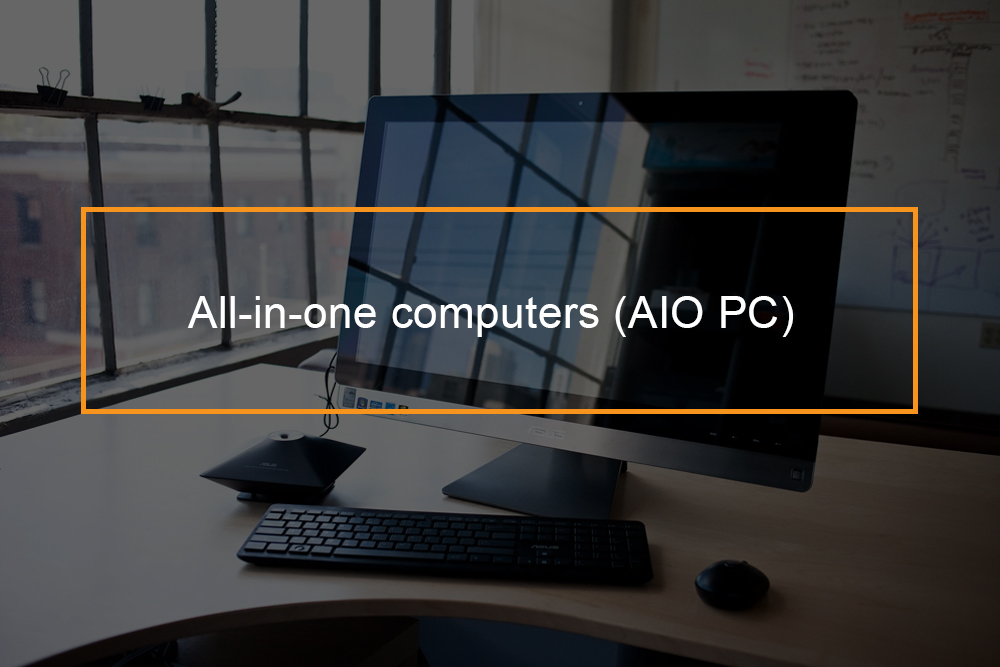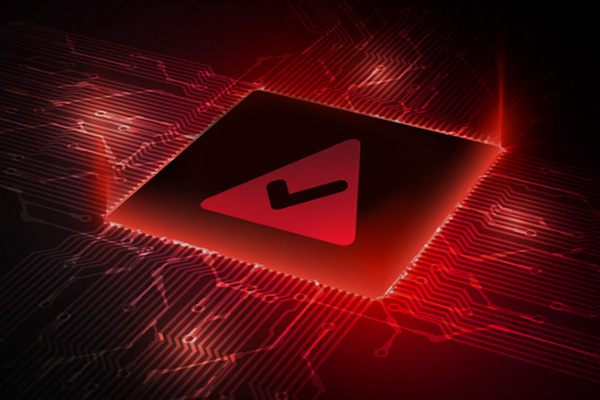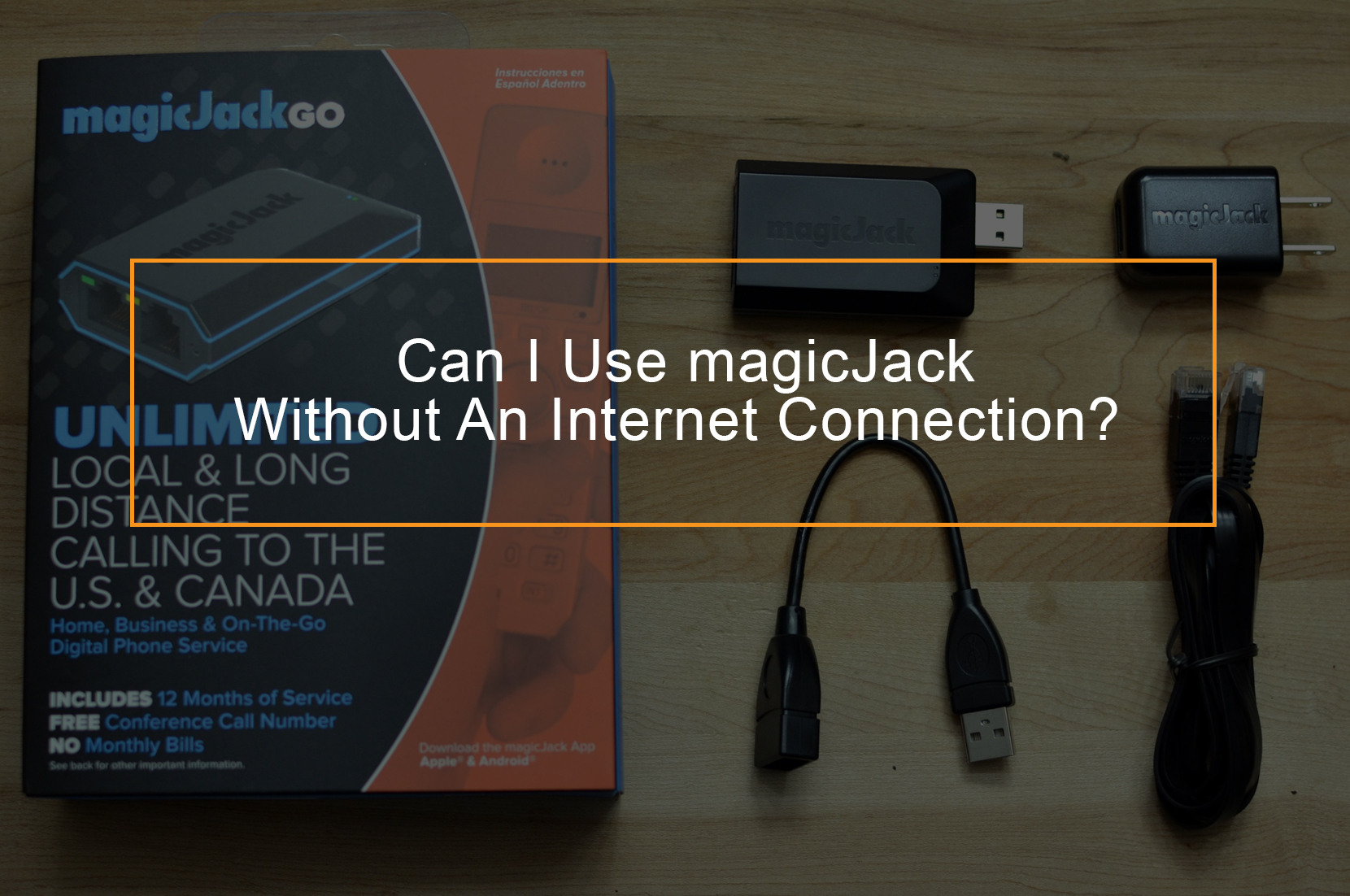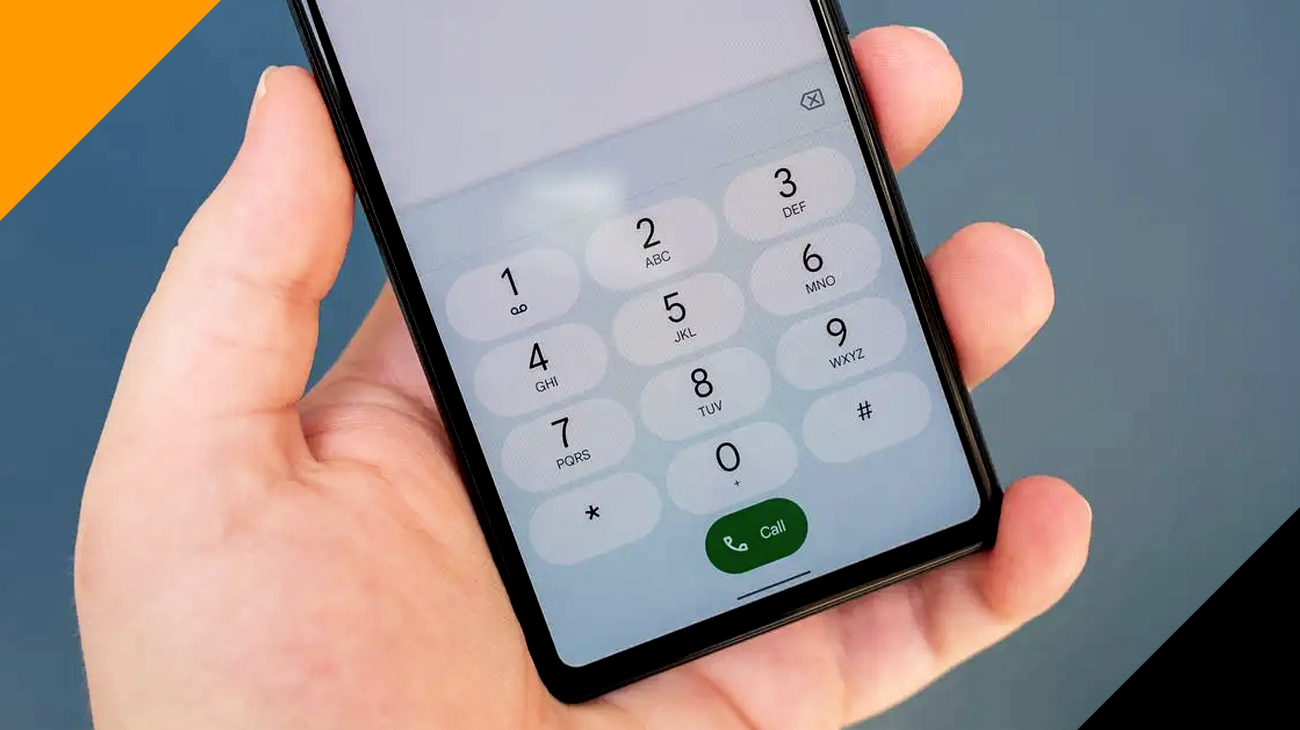
All-in-one (AIO) computers have been a strong category in the decreasing PC market over the last five years. While overall sales dropped, the AIO made headway.
Defining All-in-one PC
What is an All-in-one PC?
An all-in-one PC is a computer that has every element within the same case as the monitor, other than for peripheral components like the keyboard and mouse. With the introduction of LCDs, AIO PCs have ended up being a much smaller size, slimmer and less expensive. Apart from being aesthetically enticing, compact and easy to establish compared to a home computer, an AIO PC has minimized power and heat intake. Some kinds of AIO PCs have multi-touch display features. The style is easy to use, and accessories and peripherals can be quickly connected. Typically situated listed below or on the side of the display, the ports are easily accessible to the users.
What’s the difference between all in one and desktop?
All-in-one computers are just a design of the desktop computer system. They still have the same requirements regarding functions and performance. The only difference is the number of components. All-in-ones have a single casing that is the screen and computer versus the desktop that contains the computer case plus a different display. This debt consolidation provides the all-in-one computer system a smaller overall profile than a desktop system.
Purchasing a desktop does have some distinct advantages over an all-in-one PC, though. Because of their little sizes and need for lower power and less heat-generating parts, many all-in-one PCs feature mobile developed elements consisting of processors, memory, and drives. All of this architecture assists make the all-in-one small, but they also hinder the total performance of the system. Usually, these laptop components will not perform along with desktop criteria. For a typical user, however, a lot of these low powered mobile elements will typically prove to be fast enough.
Another obstacle with all-in-one computers is their upgradability. While the majority of desktop computer cases can be easily opened by the customer to install replacements or upgrades, all-in-one systems tend to limit access to the elements. With the increase of high-speed external peripheral adapters such as USB 3.0 and Thunderbolt, internal upgrade options are not as vital as they once were. However, they still make a huge difference for some parts such as the graphics processor.
What’s the distinction between all in one and laptop?
Among the main factors for the all-in-one PC is to conserve space over a home computer, but laptops have advanced significantly over the past number of years. They have improved so much that comparing them to an all-in-one is practically one-sided.
Since many all-in-one PCs utilize all the same elements as laptop computers, the performance levels are identical between the two types of machines. The only genuinely compelling benefit that an all-in-one PC may hold is the size of the screen. While all-in-one PCs usually feature screen sizes in between 20 and 27 inches, laptops are still typically restricted to 17-inch and smaller sized screens.
The all-in-one is smaller sized than a desktop; however, it still is connected to a desktop space. Laptops move between places and even supply power through their battery loads. This mobility makes them a lot more flexible than the all-in-one.
The one area that all-in-one systems utilized to have a substantial benefit over laptops was in price. Thanks to improvements, the tables are now nearly turned. You’ll discover numerous laptop PC for less than $500. The standard all-in-one system now costs roughly $750 or more.
Pros and Cons of All-in-one computer
What are the Pros and Cons of All-in-one Computer?
As you’re looking for the best all in one computer, we would like to bring to your attention the advantages and disadvantages of these machines so that you know your money’s worth as you acquire one.
4 Pros of All in one PCs
All-in-one PCs are much easier to transport
Standard desktop PCs are typically constrained to your workplace or house just based on the reality that transferring a screen, tower, cable televisions, and peripherals is a little bit of a hassle.
If you have to transport an AiO PC, however, you’re generally taking a look at a single system with a cable; if you have an AiO with a touchscreen, you can also pick to bypass carrying any peripherals, like a keyboard and mouse.
Although AiO PCs are much easier to transport than their standard desktop equivalents, you still want to grab a laptop if you’re somebody who is on the relocation more than you’re stationary.
All-in-one PCs use up less space
AiO PCs are getting slimmer every day, practically to the point where you can mistake one for a standard display. Not so; within is all the hardware required to run. Whether you have a small location in your home, you need a multi-PC setup and do not want two or 3 towers at your feet, or you have a ton of PCs in an office setting, removing the connected tower that comes with a standard desktop PC can maximize a lot of areas.
Not having a bunch of cable televisions attaching displays to towers in the office, makes everything look far more appropriate to any possible consumers visiting.
All-in-one PCs can provide you a touchscreen feeling
Touchscreens have progressed in the last few years, and lots of Windows laptop computers and AiO PCs now feature them. The touch function is fantastic for artwork and design, especially if you get something with pen assistance like the Microsoft Surface Studio.
There are likewise particular apps for Windows 10 that merely function well with a touchscreen or with a stylus pen. Let’s say you’ve been using a tab for a long time and now wish to upgrade to a more robust PC, an AiO with a touchscreen will be immediately familiar, and you will not miss out on the added functionality.
All-in-one PCs are simpler to set up
Not everybody is comfortable around a PC. Maybe they’ve utilized Apple items previously, or perhaps they’ve merely never taken time to get acquainted with how a PC works. If you’re looking for your first PC ever, you may be attracted to the simplicity of an AiO.
To set it up, you generally plug it into a power outlet, hit the power button, and see Windows 10 boot up. A pre-built desktop PC is equally easier to set-up– you have to plug in your display, speakers, and any other cable televisions– and is likewise a decent choice for a new customer.
A Personal Computer that comes in pieces that you need to assemble will likely be way over the head of somebody who hasn’t spent a lot of time around the hardware. Bottom line: if you’re new to the PC video game, an AiO has to do with as easy as it gets.
6 Cons of All in one PCs
Paying in Performance
Performance is crucial, even in the home computer. The space in between the quickest and slowest systems is higher than ever in the past. Even regular activities, like web browsing, become more requiring with time, so the performance of your PC at purchase can affect how long it will be useful.
All-in-ones are at a disadvantage since they’re constructed to be thin. That means less space for parts and cooling. Therefore, the AIO market is full of desktops that have low-power variations of desktop processors, or even mobile processors inside.
The all-in-one isn’t a terrific platform for upgrades
The best-selling Lenovo C50 is an excellent example. According to Newegg, its most famous model is $730 and has a Core i5-4210U. This device is a dual-core chip with a base clock of 1.7 GHz and an optimum Turbo Boost of 2.7 GHz.
Let’s presume the screen produces $150 of worth to the system, providing you $580 to spend on a similar tower. Even at that low cost, you can quickly snag a Core i5 quad-core with a base clock of 3.2 GHz. It’s not an exaggeration to say the standard PC is two times as quick.
Space only gets worse as prices increase. A thousand bucks will barely buy a quad-core all-in-one with a 1080p display. However, the same rate will quickly get you a desktop with a Core i7 Quad, gobs of RAM and discrete graphics. And, at the high-end, the AIO segment merely vanishes. No AIO can defeat a $2,000 tower PC.
Expect Obsolescence
Because an all-in-one is slower to start with, you’ll require to update it quicker. Today’s computers last a very long time, but after four or 5 years may begin to reveal their age, which particularly real for systems that weren’t cutting-edge at the beginning.
Unfortunately, AIO, which will likely feel slow faster than a tower, isn’t a terrific platform for upgrades. Nearly every PC in the category has a ball grid array (BGA) processor. On the motherboard is a chip developed for, so it can not be replaced or upgraded by the user.
You also can’t update the display screen or the speakers. While both tend to age better than a processor, they do ultimately go obsolete. A conventional monitor sold years ago had a 19-inch display with 1,280 x 768 resolution. Today’s 1080p screens will appear similarly out of design in 2025. Speakers in mint condition can last a years or more– however, a lot of all-in-ones provide mediocre sound.
What can you update? The RAM and the disk drive, usually, though some systems do not even allow this. And yet here, your choices are limited — most AIO systems ship with 2 RAM slots and a single hard disk bay, both of which are filled to capacity upgrading methods entirely replacing these components, which is more costly and more of a trouble than including extra a brand-new hard drive or RAM an existing tower setup.
When something fails, everything fails
Poor upgradability translates to a reduced ability to repair. The system’s design ensures it can work together within a limited footprint. The outcome is a sleek PC that fails the minute any major part breaks down.
A broken display sucks if you have a tower PC, but it’s easy to replace. Just buy a brand-new one, plug in the cord, and you’re excellent. With an all-in-one, a broken display makes the entire system worthless. You might have the ability to have it serviced, however, the expense will be numerous times the rate of a brand new screen.
Other parts that are easy to replace in a tower PC, but not in an all-in-one, consist of the optical drive, speakers, wireless adapters, and ports of all sorts. Changing elements such as these is a ten-minute task if you own a standard tower. AIO owners, however, can expect to spend hours doing the work at the house, or a costly repair work expenses.
Include a single significant repair work, and you might be taking a look at a lifetime cost that’s double a traditional tower PC.
All-in-one PCs are expensive
When it pertains to buying an AiO, you’re typically buying something that is created and branded by a particular business. What this implies, it’s going to be more expensive than if you were to purchase separate pieces of hardware and put together whatever yourself.
For instance, if you note the hardware in the Lenovo IdeaCentre Y910 AiO and wait for it to go on sale from different retailers, you can expect to put something similar together for a couple of hundred dollars less (consisting of a standalone screen). Bear in mind that you likewise aren’t getting the same sleek, futuristic look as you’re getting with the IdeaCentre Y910 AiO.
All-in-one PCs limit to one display
Piggybacking on the hardware upgrade constraints is the truth that you’re stuck with one display for the life of the AiO PC unless you put the AiO at your feet or to the side on your desk and hook it as much as an external display.
It might seem like the integrated display on your AiO appropriates today, however, what occurs when you wish to get something bigger or with a higher resolution? There’s likewise the problem that surrounds a broken display screen. Instead of being able to purchase a new monitor, you either have to get the whole thing fixed or buy an entirely new AiO PC.
The Best All in one Computer
5 of The Best All-in-one Computer
How would you know whether you’re picking the best all-in-one computers; you need to prioritize a great performance, aesthetics all under one roof. We’ve gathered a list of 5 Computers you can choose from.
HP ENVY 34 CURVED ($ 1,750 +)
Based on its all-in-one predecessors, HP has developed a desk-defining system with the HP Envy 34 Curved. It has a large stand and an even bigger screen. However, that’s since it not only is developed to provide piece de resistance and visuals but be a visually aggressive tool.
Internal hardware alternatives include an eighth-generation Core i5-8400T or i7-8700T CPU paired up with as much as 16GB of DDR4 memory. Graphics include a Nvidia 950M or GTX 1050 and the as much as 2TB of storage space can have hard disk drives or SSDs, with an alternative for enhancement using Intel’s Optane memory.
As outstanding as the hardware inside the Envy 34 Curved is though, the exterior is a lot more lavish. The ultrawide, quad HD screen has a resolution of 3,440 x 1,440 and thanks to its IPS panel, provides fantastic colors and a 178-degree viewing angle. There are loads of ports on the base, as well as built-in high-quality Bang and Olufsen speakers, and cordless charging assistance for mobile phones.2.
MICROSOFT SURFACE STUDIO ($ 3,000+)
Microsoft may be a newbie to the all-in-one market, however that hasn’t stopped the Redmond giant from making a splash with the high-end Surface Studio. Its vast and stunning 28-inch PixelSense display boasts a massive 4,500 x 3,000 resolution. It’s one of the best screens we’ve set eyes on, easily declaring the leading spot amongst touchscreen.
You won’t miss your choice of sixth generation Intel Core i5 or Core i7 CPUs within, plus either the GTX 965M or GTX 980M. We didn’t see the hybrid drive inside to our taste, but it’s still much better than a pure HDD– and it’s the only alternative, so you’re stuck with it. It costs about $3,000, the Studio is targeted at designers, graphic artists, and animators, but will draw the eye of everybody who walks by the place.
APPLE iMac WITH RETINA 5K DISPLAY ($ 2,000 +)
Apple’s 27-inch, Retina display iMac offered the very first 5K screen in the world. The sensational, 5,120 × 2,880 screen provides crystal-clear images and sharp text while boasting powerful internal specifications in the kind of a quad-core, 3.5 GHz Intel Core i5 CPU and 8GB of RAM. Additionally, the all-in-one preserves the sleek style with which we’ve all grown accustomed, delighting in a gap-less front panel and rounded corners that compliment the glass-and-aluminum develop. The onboard Radeon Pro 575 graphics chip can’t manage video games at full 5K, but it’s adequate for lots of at 1440p.
If you have much deeper pockets, however, you could continuously go with the iMac Pro which enhances the internal hardware to as much as an 18-core Intel Xeon W CPU, approximately 128GB of RAM, and an AMD Vega 64 graphics card for remarkable efficiency. It goes for $5,000 though, making it a little bit out of reach of many possible all-in-one buyers.
The DELL XPS 27 TOUCH($ 1,500+)
This PC is among the best Windows-based AiO we’ve ever seen. The plastic backend may feel a bit weak in comparison to the most exceptional machines. However, the 4K touchscreen gleams with information and reclines to accommodate touch and swipe on a 27-inch screen. That’s powered by a seventh-generation Intel core i5 or i7 CPU, with approximately 64GB of RAM, and as much as a terabyte of SSD storage space.
Graphics options are a bit more restricted, with a choice of either onboard Intel HD graphics, or an AMD RX 570. That’s enough for a little off-hours gaming, but you would fight with anything but the lowest settings in the majority of modern-day games.
ASUS ZEN AIO ZN242GD ($ 1,000+)
The Asus Zen AIO ZN242GD may have a mouthful of a name, but the system itself is finely tuned, carefully well balanced, and loaded with excellent hardware. Starting at $1,000, prospective buyers have the option of Core i5 or Core i7 CPUs and as much as 32GB of RAM. That general computing power is paired up with a Nvidia GTX 1050 graphics card which uses satisfactory gaming performance for off-hours fun, as well as the capability to speed up some 3D application.
Probably the system’s most impressive feature though is its footprint. Shunning the large stands of some of its contemporaries, the wine-stem-like frame of the Zen AIO uses up little desk space, indicating you can use it on even rather small surfaces without it taking over. At just 24-inches, this isn’t the biggest all-in-one out there, however, at 1080p resolution and with thin bezels it’s a great suitable for a compact, yet a beautiful system.









